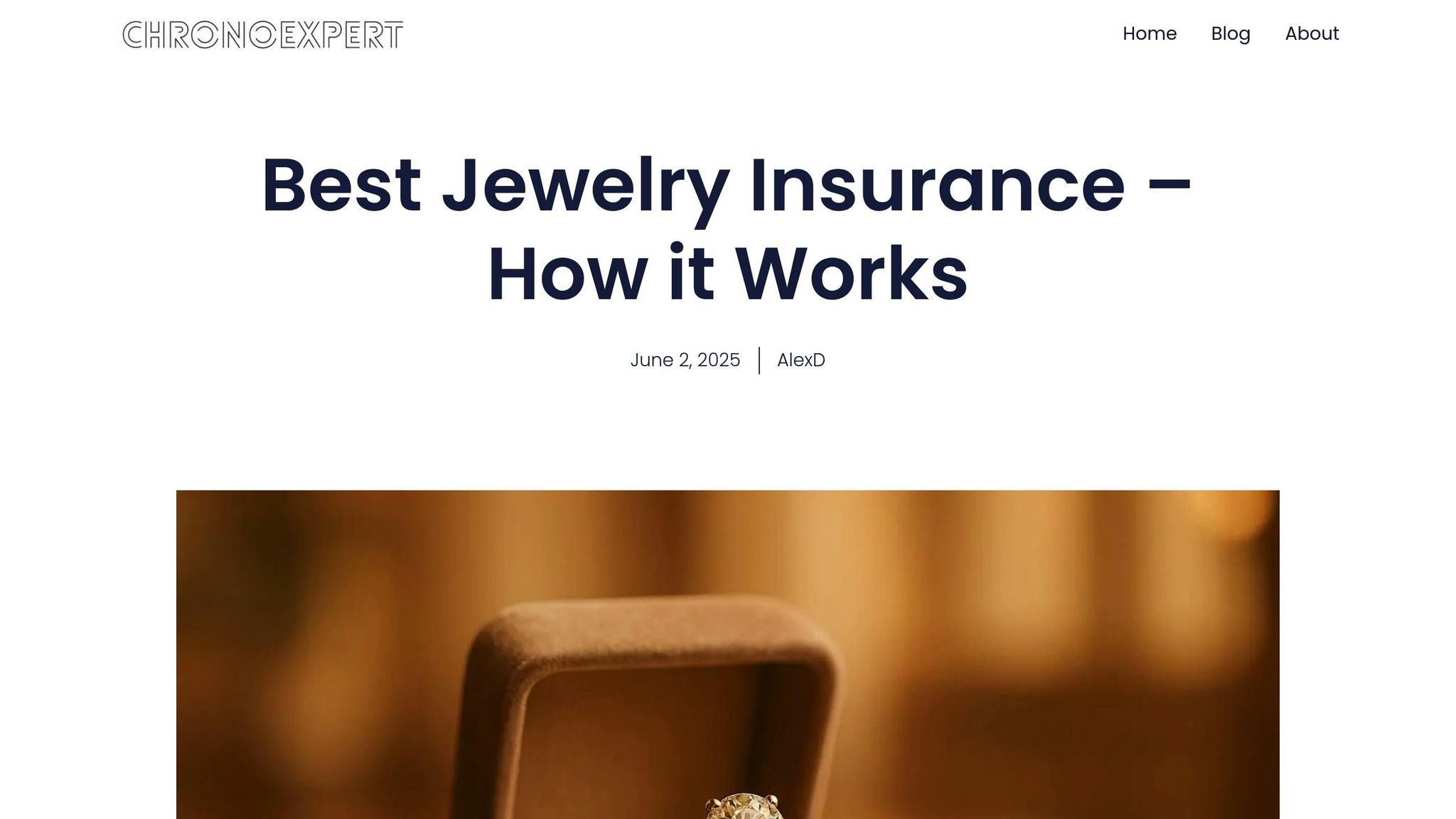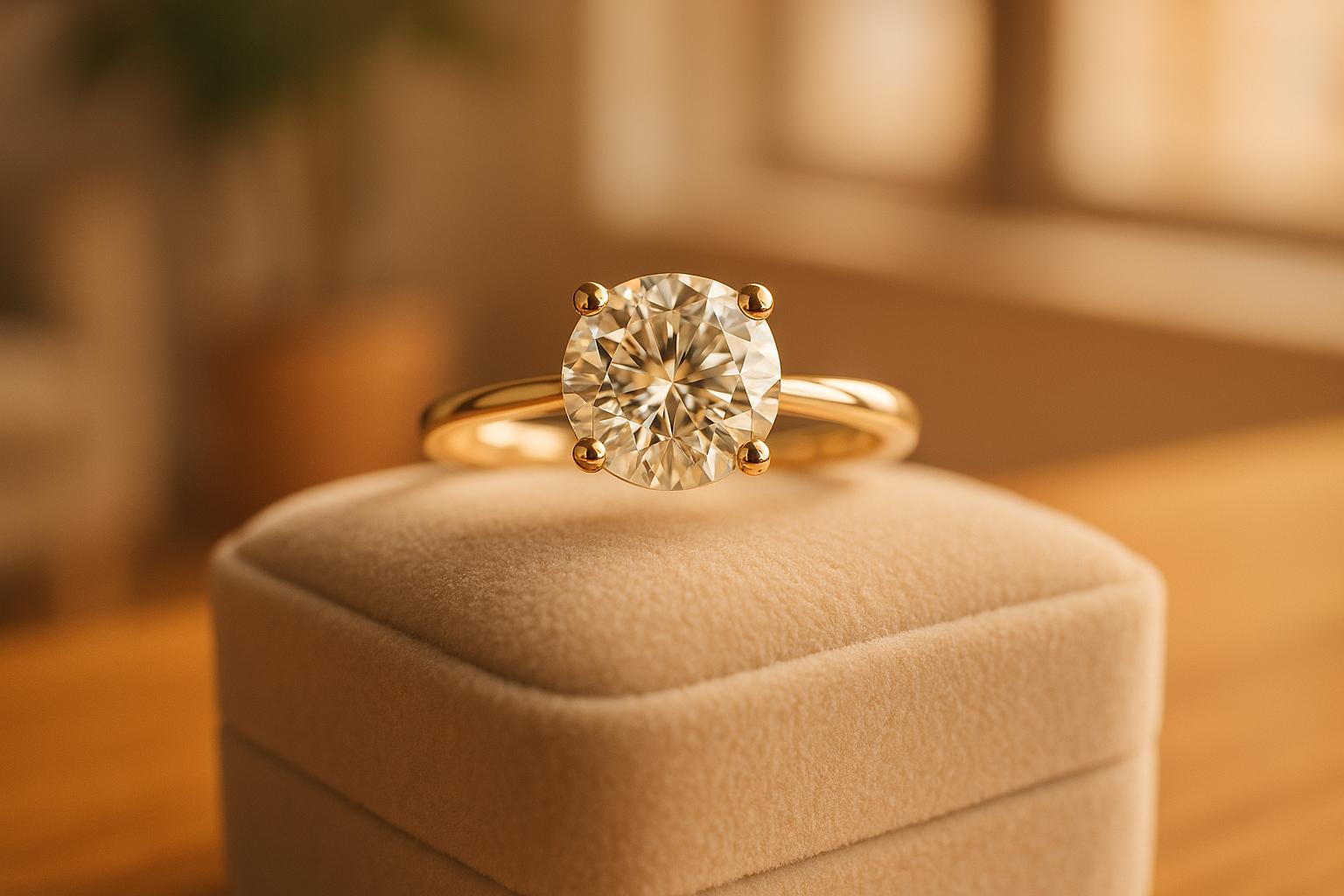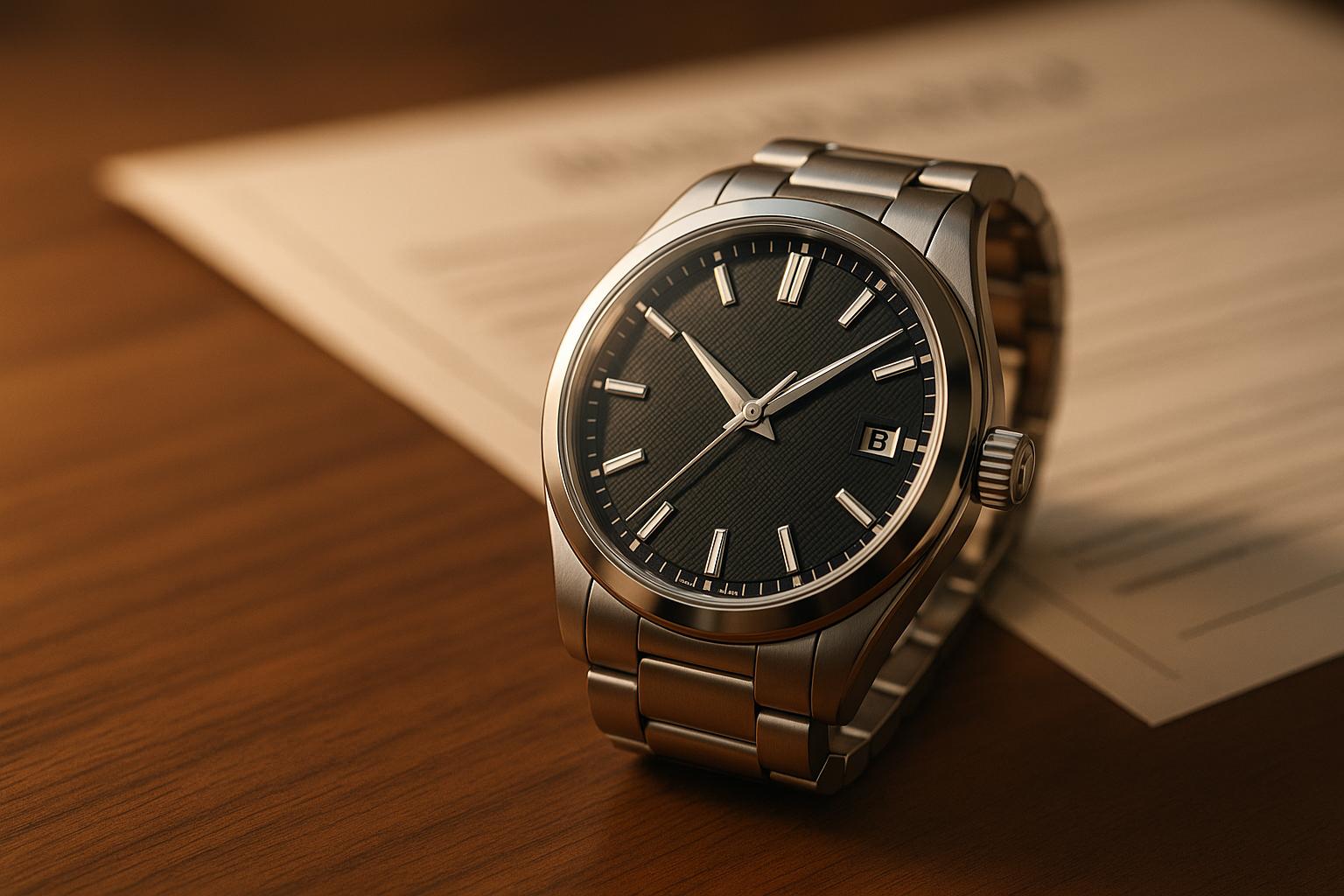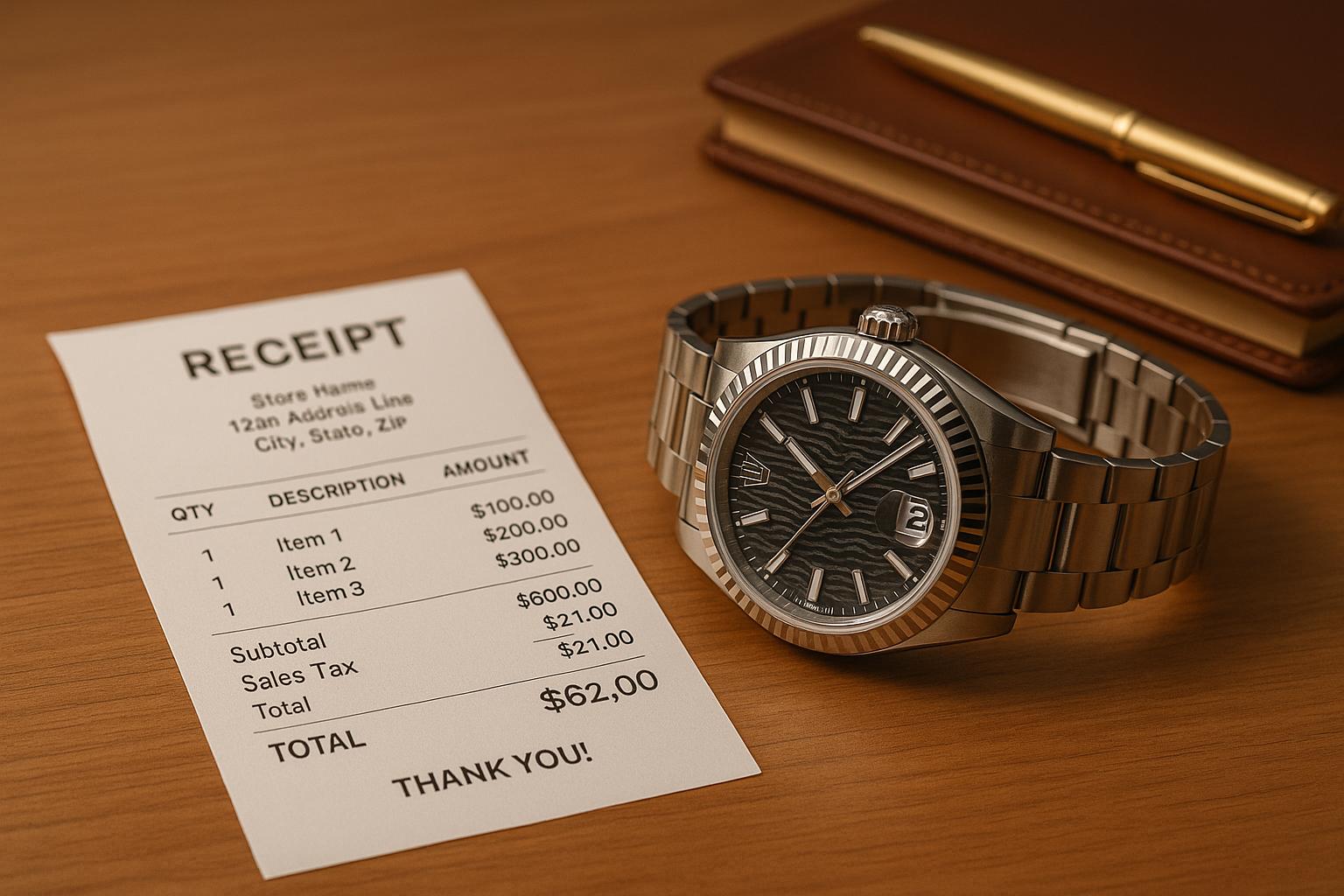Protecting your engagement ring is both a practical and emotional decision. Whether it’s a standalone policy or an addition to your home insurance, engagement ring insurance safeguards against theft, loss, and damage. Here’s what you need to know:
- Coverage: Protects against theft, accidental damage, stone loss, and mysterious disappearance. Some policies include worldwide protection.
- Cost: Premiums range from 1% to 3% of your ring’s value. For example, insuring a $12,000 ring typically costs $120–$360 annually.
- Standalone vs. Home Insurance: Standalone policies offer broader protection, higher limits, and don’t affect your home insurance claims history.
- Exclusions: Policies may not cover wear and tear, negligence, or damage during specific activities.
To get started, check your current policies, get a professional appraisal, and compare quotes from trusted providers like Assetsure, Stanhope Insurance, and TH March. Protect your investment with a tailored policy that fits your needs.
Is Your Engagement Ring at Risk? The Truth About JEWELRY INSURANCE!
What Engagement Ring Insurance Covers
When it comes to protecting your engagement ring, understanding what your insurance policy covers is essential. While most UK policies aim to provide thorough protection, the exact details can differ depending on the provider.
Covered Scenarios
Theft Protection
Theft is one of the most frequent claims, with over 1.8 million theft offenses reported in England and Wales in the year ending September 2024. Typically, insurance policies cover theft whether it happens at home, in public, or while traveling. This includes situations like burglary, mugging, or pickpocketing.
Accidental Damage
Insurance often covers accidental damage caused by everyday wear and tear. For instance, if your ring catches on clothing, is dropped, or strikes a hard surface, the policy may cover the repair costs. This is especially useful for incidents like chipped diamonds, which standalone jewelry insurance often includes.
Accidental Loss
Some policies also account for mysterious disappearances, meaning your ring is covered even if it goes missing without a clear explanation. This type of coverage ensures you can replace the ring without hassle if it’s lost.
Stone Loss
For rings with intricate designs or multiple stones, specialized coverage often includes protection against individual stones falling out of their settings. This is particularly important for multi-stone rings or those with delicate craftsmanship.
Policy Exclusions and Conditions
While engagement ring insurance offers broad protection, it’s important to know what isn’t covered. Common exclusions include wear and tear from regular use, intentional damage, or loss due to negligence.
Storage Requirements
High-value rings may need to be stored in a safe when not being worn. Some insurers require secure storage overnight or during extended periods when the ring is left unattended.
Activity Restrictions
Certain activities might void your coverage. For example, some policies exclude damage caused while swimming or sunbathing, as these activities can increase the risk of loss or harm to the ring.
Underwriting Scrutiny
Standalone jewelry policies often require additional documentation or updated appraisals, especially for high-risk situations like wearing the ring outside the home.
While these conditions might seem restrictive, many policies also offer protection beyond the UK.
Worldwide Coverage
Most UK engagement ring insurance policies include worldwide coverage as part of their standard offering. However, it’s crucial to check the terms and limitations, as they can vary.
Travel Duration Limits
Policies often limit coverage for trips lasting 60 days or less. If you’re planning a longer trip, you may need to inform your insurer or arrange for additional coverage.
Coverage Limits Abroad
Some insurers cap worldwide protection at specific amounts, such as £30,000. This is especially important for high-value rings, as their worth might exceed these limits.
Security Requirements While Traveling
When traveling, insurers usually require that the ring is either worn, kept under close personal supervision, or stored in a locked safe. While hotel safes generally meet these criteria, leaving your ring unattended in a hotel room could void your coverage.
Documentation Requirements
Always keep your policy details handy while traveling. Many insurers require quick notification in the event of loss or theft, and having your policy documents on hand can help speed up the claims process.
Engagement Ring Insurance Costs in 2025
Knowing how much engagement ring insurance costs can help you plan for safeguarding your cherished piece of jewelry. While the exact price varies, premiums are generally a small percentage of your ring’s value.
Average Premiums in 2025
In 2025, engagement ring insurance premiums have stayed consistent, typically ranging from 1% to 3% of the ring’s appraised value. For many couples, this means affordable yearly protection for their prized possession.
For example, market data indicates that annual premiums start at $140, which already includes a 12% tax and broker fees. This makes standalone policies accessible, regardless of your ring’s value.
To break it down further, insuring a ring valued at $12,000 would cost between $120 and $360 per year.
Factors That Affect Insurance Costs
Several factors influence how much you’ll pay for engagement ring insurance. Understanding these can help you estimate your costs and even find ways to save.
- Ring Value: The higher the appraised value of your ring, the more you’ll pay for coverage.
- Location: Where you live matters. Areas with higher crime rates tend to have higher premiums.
- Claims History: If you’ve filed previous claims, you may face higher rates due to perceived risk.
- Age: Younger policyholders often pay more because they’re considered higher-risk.
- Excess Amount: Opting for a higher voluntary excess (the amount you pay out of pocket during a claim) can lower your premium.
- Worldwide Coverage: Policies that include international protection may cost more, depending on the scope and duration of coverage.
- Additional Fees: Taxes like the Insurance Premium Tax (IPT) and broker fees can also increase your total cost.
Let’s see how all these factors play out in a real-world example.
Premium Calculation Example
Here’s a practical example to illustrate how these elements come together to determine insurance costs.
Meet Sarah: She’s 28, lives in Manchester, and owns a $15,000 engagement ring.
- Base Premium: At 1%–3% of the ring’s value, her annual premium would be between $150 and $450. Most insurers would likely quote her in the middle range, around $225–$300.
- Location Impact: Manchester’s moderate crime rate places Sarah in a standard risk category, so her location doesn’t significantly increase her premium.
- Age and Claims History: At 28, with no previous claims, Sarah qualifies for standard rates without penalties.
- Excess Selection: She chooses a $240 voluntary excess, which reduces her premium by 10–15%. This adjustment lowers her annual cost to roughly $200–$255.
- Final Cost Breakdown: Sarah’s premium is approximately $225, including a base premium of $195, a 12% insurance premium tax ($23), and a $7 broker fee.
This premium – about 1.5% of her ring’s value – covers theft, loss, and accidental damage worldwide.
"If replacing an engagement ring unexpectedly would be a financial burden or an emotional stressor, then insurance is a smart and affordable way to protect it." – Mike Alexander, Chief Operating Officer of Jewelers Mutual
For couples debating whether insurance is worth it, consider this: nearly 50% of engagement rings are uninsured. Without coverage, you’re exposed to the full financial and emotional cost of replacing such a meaningful item. A modest annual premium can provide peace of mind and safeguard your investment.
sbb-itb-fcc00bb
How to Get Engagement Ring Insurance in the UK
Getting engagement ring insurance in the UK involves a few straightforward steps: reviewing your current insurance policy, considering standalone coverage if necessary, and staying informed about renewals and claims processes.
Check Existing Policies
Before exploring new insurance options, take a close look at your current home contents insurance policy. Many standard policies include a single-item limit for jewelry, but this limit might not fully cover the value of a high-end engagement ring. If your ring’s value exceeds this limit, you may need to list it separately as a specified item on your policy. Alternatively, you can explore standalone insurance designed specifically for jewelry.
Keep in mind that home contents insurance typically covers items while they’re at home. If you want protection that extends beyond your home, such as coverage for accidental loss or theft while traveling, you’ll likely need additional or specialized coverage.
Applying for Standalone Insurance
If your current policy doesn’t provide adequate protection, standalone engagement ring insurance is a practical solution. Start by getting a professional appraisal of your ring. This valuation should include detailed information about the ring’s features, such as the diamond’s quality, the type of metal, and the craftsmanship. Ideally, the appraisal should be recent – within the past year – to reflect the current market value.
To apply for standalone insurance, gather the following documents:
- A recent valuation certificate
- Proof of ownership
- Clear photographs of the ring
Keep these records in a safe place, as they’ll be essential for confirming the ring’s insured value and processing claims if needed.
Next, research insurance providers that specialize in jewelry. Some insurers offer quick online applications, while others may require a phone consultation. When comparing policies, don’t just focus on the premium cost. Look at the coverage limits, whether the policy includes worldwide protection, and what types of incidents are covered. It’s also a good idea to request a sample policy to review key terms and exclusions. Some insurers may require periodic professional inspections of your ring to ensure it remains in good condition.
Renewals and Claims Process
Once your policy is in place, staying on top of renewals and understanding the claims process will help you maintain continuous coverage. Most policies renew annually, and it’s wise to have your ring reappraised periodically to ensure the insured value reflects current market conditions.
If you need to make a claim, act quickly. In cases of theft, report the incident to the police immediately and obtain a crime reference number – this is a crucial part of the claims process. Notify your insurer as soon as possible and complete a detailed claim form, including all necessary documentation such as the police report, your original appraisal, photographs, and any repair estimates if applicable.
Avoid repairing or replacing the ring before your claim is approved, as this could impact the compensation amount. Many insurers assign dedicated claims handlers to guide you through the process and may even coordinate repairs or replacements through a jeweler of your choice. Keep detailed records of all claim-related correspondence and reference numbers to ensure a smooth experience.
UK Insurance Providers and Resources
Finding the right insurer for luxury jewelry protection in the UK can feel overwhelming, but there are both well-established brokers and specialized insurers that cater to this niche. Here’s a closer look at some of the top providers and tips to help you select the best policy for your needs.
Chronoexpert: Your Guide to Luxury Jewelry Insurance

Chronoexpert serves as a helpful resource for those seeking luxury jewelry insurance. They provide straightforward advice on securing comprehensive protection for high-value engagement rings. Below, we delve into other leading UK providers to help you make an informed choice.
Top UK Insurance Providers
When it comes to engagement ring insurance, a few standout companies in the UK offer tailored coverage to suit a variety of needs.
Stanhope Insurance acts as a broker, connecting clients with major insurers like Chubb, SCOR, and Ant Insurance. Their policies cover rings valued between approximately $1,250 and $625,000, with annual premiums starting at around $80. Stanhope Insurance boasts a strong customer rating of 4.87 based on 2,680 reviews.
"Our comprehensive range of four insurance policies gives you the peace of mind to wear your engagement ring when and where you want." – Stanhope Insurance
Assetsure provides a zero-excess, all-risks policy that includes protection against accidental damage, theft, and loss of stones. Specializing in standalone jewelry insurance, they offer a new-for-old replacement policy, ensuring you receive equivalent value regardless of market changes. Assetsure has earned a TrustScore of 4.8 from 3,432 reviews.
"Assetsure Engagement Ring Insurance ensures your most precious and valuable items are comprehensively protected, up to your chosen sum insured, on a new-for-old basis." – Assetsure
TH March brings over 130 years of expertise to jewelry insurance. Their policies start at under $75 per year and allow clients to choose their preferred jeweler for repairs and replacements, giving added flexibility. They maintain a stellar customer satisfaction rating of 4.92 from 380 reviews.
"Ring insurance from TH March provides worldwide accidental damage, loss and theft cover for your precious items." – TH March
Tips for Choosing the Right Policy
Once you’ve explored the top providers, it’s time to zero in on the details that align with your specific needs. Here are some key factors to consider:
- Comprehensive Coverage: Look beyond premium costs and focus on whether the policy covers accidental damage, theft, and loss both at home and abroad. Most standard home insurance policies don’t extend protection outside your property, so worldwide coverage is a must.
- Replacement and Reimbursement: Understand how claims are handled. Does the insurer work with approved jewelers, or will you receive a cash settlement based on current market value? Clear terms on these aspects can save you from future headaches.
- Claims Support: Research how each provider manages claims. Some offer dedicated claims handlers for personalized support, while others rely on automated systems that may not suit more complex cases.
- Excess and Premium Balance: If your ring is valued at $12,500 or more, choosing a higher voluntary excess can lower your annual premiums. Just ensure you’re comfortable with the out-of-pocket expense if you need to file a claim.
- Valuation Requirements: Some insurers accept purchase receipts for newer rings, while others may require professional appraisals regardless of age. Appraisals typically cost between $120 and $240 and may need periodic updates to ensure accurate coverage.
- Policy Exclusions: Review exclusions carefully. Common ones include wear and tear, mechanical breakdown of settings, or damage from certain activities. If your lifestyle increases the risk to your ring, make sure your policy explicitly covers those scenarios.
Conclusion
Protecting your engagement ring with insurance not only safeguards its financial value but also preserves the sentimental importance it holds. As Mike Alexander, Chief Operating Officer of Jewelers Mutual, aptly states: "If replacing an engagement ring unexpectedly would be a financial burden or an emotional stressor, then insurance is a smart and affordable way to protect it."
While standard home insurance policies might seem like a fallback option, they often provide limited coverage for high-value jewelry – typically capping at around $1,500. Considering the average engagement ring in the UK is valued at approximately $2,500, this leaves a significant gap, exposing couples to potential financial loss in the event of theft, loss, or damage.
Opting for standalone engagement ring insurance offers a more thorough safety net. With a reasonable annual premium, you gain worldwide protection, coverage for unexplained loss, and peace of mind knowing repairs or replacements won’t affect your homeowners insurance rates.
To ensure your ring is fully protected, follow these simple steps: get a professional appraisal, compare quotes from multiple trusted providers, and carefully review the policy terms to match your lifestyle and travel needs. With 1,806,484 theft offenses recorded in England and Wales in the year ending September 2024, taking proactive measures is a wise choice.
Chronoexpert is here to guide you every step of the way, providing expert advice on insuring luxury jewelry and simplifying the process. Whether you’re newly engaged or reevaluating your current coverage, now is the time to act. Protect your cherished ring with a customized policy designed to offer complete peace of mind, no matter the circumstances.
FAQs
Should I choose standalone engagement ring insurance or add it to my home insurance policy?
When choosing between standalone engagement ring insurance and adding it to your home insurance policy, it’s important to weigh coverage, cost, and protection scope.
A standalone policy often offers more specialized protection. This includes higher coverage limits, worldwide protection, and coverage for accidental damage or loss. On the flip side, this type of policy usually comes with a higher price tag. Adding your ring to your home insurance policy, however, is generally a more affordable option. But keep in mind, it may come with lower coverage limits and might not cover certain types of damage or loss.
Think about your ring’s value, your lifestyle (like frequent travel or active hobbies), and the level of protection you want. These factors can help you determine the best option for your needs.
How do my location and claims history impact the cost of engagement ring insurance?
Your location has a big impact on your insurance costs. If you live in an area with higher crime or theft rates, you’ll likely face higher premiums. That’s because insurers evaluate the risk level of your neighborhood to estimate the chances of you filing a claim.
Another factor that can influence your rates is your claims history. If you’ve filed claims in the past, insurers might see you as a higher risk, which could raise your premiums by 10% or more. On the other hand, maintaining a clean claims record can help you lock in lower rates.
What should I do if I need to file a claim for my engagement ring insurance while traveling internationally?
If something happens to your ring while you’re traveling abroad, the first step is to reach out to your insurance company right away to report the incident. If the situation involves theft or any kind of crime, make sure to notify the local authorities and get a police report. This report will serve as critical evidence for your claim.
You’ll also need to gather supporting documents, such as receipts, photos of the ring, or proof of ownership. Once you have everything, complete the claim form your insurer provides and submit it through their preferred method – whether that’s online, over the phone, or via email. Be mindful of the submission deadline specified in your policy. Acting promptly and providing detailed documentation will make the process much smoother.


